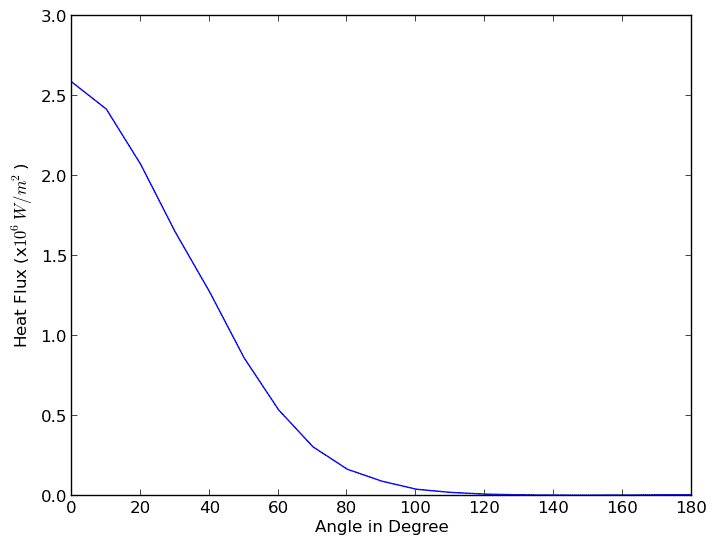ABSTRACT
The accurate simulation of the aerothermodynamic effects on surface of a reentry vehicle is highlyessential for designing process. The significance of the accuracy of the computational results is due to the non-reproducible nature of the extreme conditions of high speed and high energy in the laboratory. Many complex phenomena such as chemical and ionization reactions, surface chemistry and radiation arise in the post shock region. The vibrational levels of the molecules
are excited and considerable difference in the values of translational, rotational and vibrational temperature highlight the non-equilibrium nature of the flow. The ambient conditions at the high altitudes(∼ 80km) are rarefied and render the continuum based computational fluid dynamics methodologies inaccurate. Direct Simulation Monte Carlo(DSMC) method[1] is a statistical particle method which has been used widely to predict the flow physics in the rarefied non-equilibrium simulations.
The correct simulation of air chemistry has a significant role in predicting accurate heat flux and heat load on the Thermal Protection Surface(TPS) of the vehicle. The dissociation, recombination and exchange reactions better known as Zeldovich reactions are the major reactions of interest. Bird[1] suggested the Total Collision Energy(TCE) model which is the most widely used chemical reaction model in DSMC. The TCE requires that the total energy of the collision which comprises of the sum of the relative translational energy, the rotational and the vibrational energy of the participating molecules exceed the activation energy of the chemical reaction. The reaction probability for such a collision pair is calculated on the basis of the Arrhenius equation for the suitable chemical reactions. If the reaction probability is higher than the value of a randomly chosen number, the reaction is said to have occurred and the post reaction energies of the product species are determined. Boyd[2] added a vibrational component to the TCE model reaction probability formulation that led to the Vibrationally Favored Dissociation(VFD) model. It is claimed that VFD captures the coupled vibration-dissociation phenomenon more accurately. Both the methods rely on the equilibrium based Arrhenius equation and their effectiveness in the non-equilibrium shock region is debatable. Bird[3] has improved his TCE idea with a more realistic Quantum Kinetic(QK) model. The dissociation reaction in the molecules is carried out when the post collision vibrational level computed using the Larsen-Borgannake(LB) method lies above the dissociation limit. The recombination and exchange reaction are phenomenological in operation similar to TCE model.
The present work focuses on implementing the chemical reaction models and comparing the results with experimental flight data of FIRE II and Stardust reentry vehicles. The accuracy of the three chemical models explained will be discussed in detail with prime attention on comparison of the heat flux, heat load around the vehicle and chemical composition of various gas components in the fore-body of the geometry. The variation of macroscopic properties such as temperature, pressure and density in the simulation domain will be studied. The rate of reactions of various chemical processes in the domain will be investigated. Also a parametric study will be undertaken for appropriateness of different models for a range of Mach numbers.
In the present abstract, heat flux variation vs angle[4] with TCE model around a circular geometry an air flow of 12891m/s at ambient conditions corresponding to a free stream temperature of 212 K and number density equal to 2.63 × 1020 m−3 is given in the Fig.1.

The 0◦ in the x-axis represents the stagnation point. The stagnation value of the present simulation has a good match with the data provided by Zhong et.al.[4](= 2.55 × 106 W/m2 ).
REFERENCES:
[1] Bird G. A, Molecular Gas Dynamics and the Direct Simulation of Gas Flows, Clarendon,Oxford, 1994.
[2] Haas B.L., Boyd I.D., Models for direct Monte Carlo simulation of coupled vibration–dissociation,Physics of Fluids A, v 5, pp 478, 1993.
[3] Bird G.A., The Q-K model for gas-phase chemical reaction rates, Physics of Fluids , v 23,pp 101-106, 2011.
[4] Zhong J.,Ozawa O.,Levin D.A., Modeling of Stardust Reentry Ablation Flows in the Near-Continuum Flight Regime, AIAA Journal, v 46, n 10, 2008

